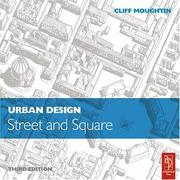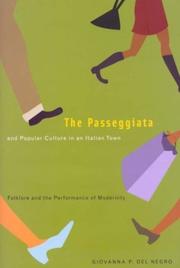| Listing 1 - 4 of 4 |
Sort by
|
Book
ISBN: 1438436211 9781438436210 143843619X 9781438436197 1438436203 9781438436203 9781438436197 9781438436203 Year: 2011 Publisher: Albany, N.Y. : Excelsior Editions/State University of New York Press,
Abstract | Keywords | Export | Availability | Bookmark
 Loading...
Loading...Choose an application
- Reference Manager
- EndNote
- RefWorks (Direct export to RefWorks)
Focusing on the liberating promise of public space, The Beach Beneath the Streets examines the activist struggles of communities in New York City—queer youth of color, gardeners, cyclists, and anti-gentrification activists—as they transform streets, piers, and vacant lots into everyday sites for autonomy, imagination, identity formation, creativity, problem solving, and even democratic renewal. Through ethnographic accounts of contests over New York City's public spaces that highlight the tension between resistance and repression, Shepard and Smithsimon identify how changes in the control of public spaces—parks, street corners, and plazas—have reliably foreshadowed elites' shifting designs on the city at large. With an innovative taxonomy of public space, the authors frame the ways spaces as diverse as gated enclaves, luxury shopping malls, collapsing piers and street protests can be understood in relation to one another. Synthesizing the fifty-year history of New York's neoliberal transformation and the social movements which have opposed the process, The Beach Beneath the Streets captures the dynamics at work in the ongoing shaping of urban spaces into places of repression, expression, control, and creativity.
City planning --- Public spaces --- Plazas --- City squares --- Piazzas --- Piazze --- Public squares --- Quadrangles (Plazas) --- Quads (Plazas) --- Squares, City --- Squares, Public --- Cities and towns --- Public places --- Social areas --- Urban public spaces --- Urban spaces --- New York (N.Y.) --- New York (State)
Book
ISBN: 9783038216490 9783038215233 3038216496 3038215236 3038215708 Year: 2015 Publisher: Basel, Switzerland : Birkhäuser,
Abstract | Keywords | Export | Availability | Bookmark
 Loading...
Loading...Choose an application
- Reference Manager
- EndNote
- RefWorks (Direct export to RefWorks)
Bei jedem städtebaulichen Entwurf, bei jedem Eingriff in die räumliche Struktur öffentlicher städtischer Räume stellt sich die Frage nach der Komposition und den räumlichen Qualitäten von Plätzen. Auf welche Weise sind die wesentlichen Elemente beteiligt: Dimension, Proportion, Ausrichtung, Geschlossenheit, Zugänge, Schwerpunkt- und Randausbildung sowie Oberflächen und Materialien? Wie tragen sie zum Charakter eines Stadtraumes bei, der sich zur Identifikation der Bewohner anbietet?Für aktuelle Entwürfe unterstützt der Vergleich mit historischen Beispielen die Vorstellung räumlicher Wirkung. Ähnlich einem Grundrissatlas für Gebäude ermöglicht es der Platzatlas, räumliche Bedingungen für Bewegung und Aufenthalt anhand vergleichbarer existierender Plätze einzuschätzen. Für die meisten Rahmenbedingungen (Form, Größe, Lage, Topographie usw.) kann der Planer hier ein Vergleichsbeispiel finden.70 europäische Plätze werden mit den wichtigsten Charakteristika in Schwarzplan, Grundriss, Schnitt und Axonometrie in einheitlichem Maßstab präsentiert und erläutert. The question of composition and spatial qualities arises in every urban design concept or intervention in the spatial structure of urban public squares. How are the essential elements involved: dimension, proportion, alignment, cohesion, accesses, shaping of focus point and of edges like surfaces and materials? How do they contribute to a character of urban space with which residents can identify? Comparing historical examples with current designs aids one in visualizing spatial effect. Similar to a floor plan manual for buildings, Squares allows the user to evaluate spatial conditions for movement and rest based on comparable existing urban squares. The book offers the planner a comparative example for most conditions (shape, size, location, topography, and so on). Seventy European urban squares are presented and explained with the most important characteristics in a consistent manner in as-built plan, ground plan, section, and axonometric projection.
Places --- Espaces publics --- Parken ; Europa --- Europa --- 711.61 --- 711.4 --- 72.036 --- Pleinen --- Publieke ruimte --- Openbare ruimte --- Stedenbouw --- Twintigste eeuw (architectuur) --- 20ste eeuw (architectuur) --- Public spaces --- Plazas --- Garden squares --- Squares --- Designs and plans --- Dessins et plans --- (Historische) pleinen ; in Europese steden --- Stedenbouw. Ruimtelijke ordening ; pleinen, open ruimten --- City squares --- Piazzas --- Piazze --- Public squares --- Quadrangles (Plazas) --- Quads (Plazas) --- Squares, City --- Squares, Public --- Cities and towns

ISBN: 1136350349 1281024406 9786611024406 0080520278 9780080520278 9780750657174 0750657170 0750657170 6611024409 9781136350290 9781136350337 9781136350344 9781138142473 Year: 2003 Publisher: Amsterdam ; London : Architectural Press,
Abstract | Keywords | Export | Availability | Bookmark
 Loading...
Loading...Choose an application
- Reference Manager
- EndNote
- RefWorks (Direct export to RefWorks)
This book, part of a series of four, offers a detailed analysis of urban design, covering the streets, squares and buildings that make up the public face of towns and cities. It outlines the theory of the principal features of urban design from which method is developed and provides a better understanding of the main elements of urban design. This includes the arrangement, design and details of the streets and squares, and the roles they play in city planning.This third edition includes chapters on ""Sustainable Urban Design"" and
Streets --- Plazas --- City planning. --- Cities and towns --- City planning --- Civic planning --- Land use, Urban --- Model cities --- Redevelopment, Urban --- Slum clearance --- Town planning --- Urban design --- Urban development --- Urban planning --- Land use --- Planning --- Art, Municipal --- Civic improvement --- Regional planning --- Urban policy --- Urban renewal --- City squares --- Piazzas --- Piazze --- Public squares --- Quadrangles (Plazas) --- Quads (Plazas) --- Squares, City --- Squares, Public --- Avenues --- Boulevards --- Thoroughfares --- Roads --- Design. --- Government policy --- Management

ISBN: 1282861921 9786612861925 077357199X 9780773571990 9780773527225 0773527222 9781282861923 6612861924 Year: 2004 Publisher: Montreal ; Ithaca : McGill-Queen's University Press,
Abstract | Keywords | Export | Availability | Bookmark
 Loading...
Loading...Choose an application
- Reference Manager
- EndNote
- RefWorks (Direct export to RefWorks)
An immigrant daughter who returned to her mother's home town, Giovanna Del Negro spent a year doing intensive fieldwork in the homes and public spaces of Sasso. She reveals the diverse reactions that Sassani have to industrialization, changing gender roles, immigration, and the proliferation of the global media. Unlike accounts that focus exclusively on large-scale social forces or universal theories of historical change, this study, set against the backdrop of Italy's mid-1990s corruption scandals, centres on the experiences of ordinary people and the culturally specific ways that modernity reveals itself in a particular place. Del Negro focuses on the passeggiata, and her evocative descriptions of dressing, walking, courting, and socializing in the piazza paint a vivid picture of this event. Sassani pride themselves on their urbane sophistication, only half jokingly referring to their town as "our little Paris." Del Negro shows how different segments of Sassani society (older women and teenage girls, motorbike boys and established professionals) use passeggiata performances to depict themselves as modern, stake their place in the town's collective self-image, and debate the meaning of modernity. Examining everything from Sassani interpretations of tabloid television and soap operas to community games and postcards, Del Negro casts her net wide to illuminate the local culture. Richly sophisticated yet highly accessible, this innovative study speaks to contemporary debates about modernity and globalization.
Folklore --- Plazas --- Walking --- Popular culture --- Places --- Culture populaire --- Culture, Popular --- Mass culture --- Pop culture --- Popular arts --- Communication --- Intellectual life --- Mass society --- Recreation --- Culture --- City squares --- Piazzas --- Piazze --- Public squares --- Quadrangles (Plazas) --- Quads (Plazas) --- Squares, City --- Squares, Public --- Cities and towns --- Pedestrianism --- Aerobic exercises --- Animal locomotion --- Athletics --- Human locomotion --- Folk beliefs --- Folk-lore --- Traditions --- Ethnology --- Manners and customs --- Material culture --- Mythology --- Oral tradition --- Storytelling --- Social aspects --- Abruzzo (Italy) --- Abruzzo (Italie) --- Abruzzi (Italy) --- Regione Abruzzo (Italy) --- Abruzzes (Italy) --- Social life and customs. --- Moeurs et coutumes.
| Listing 1 - 4 of 4 |
Sort by
|

 Search
Search Feedback
Feedback About UniCat
About UniCat  Help
Help News
News